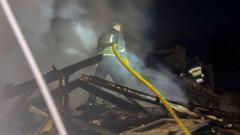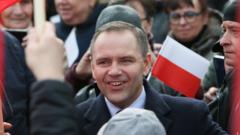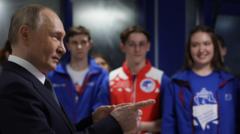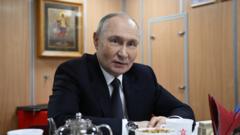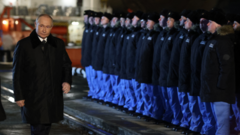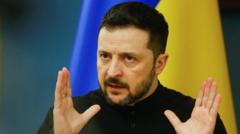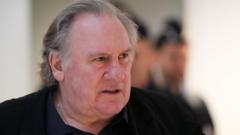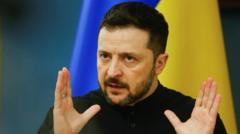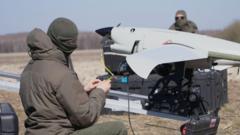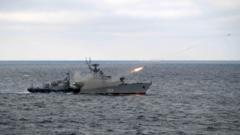European leaders are increasingly vocal about the necessity to enhance their military expenditures and bolster Ukraine's defense against Russia. However, as they navigate their financial obligations amid economic challenges, disparities emerge, highlighting potential divisions within the European bloc.
European Leaders Face Rising Strains in Military Spending for Ukraine

European Leaders Face Rising Strains in Military Spending for Ukraine
Amid growing pressure from the U.S., European nations struggle to finance defense needs and support Ukraine, revealing cracks in unity.
European leaders are under significant pressure from Washington to increase their financial and military support for both Ukraine and their own national defenses amidst the ongoing conflict. While they publicly convey a united front aimed at supporting Ukraine and protecting European borders, the reality is marked by a growing gap between ambitious rhetoric and actionable measures.
Political dynamics are further complicated by the economic environment characterized by low growth and rising national debts. Countries like the Netherlands are resistant to the idea of collective defense spending that would entail raising joint debts, revealing a significant divide over fiscal strategy.
The European Commission President Ursula von der Leyen recently proposed a multi-billion euro initiative for military enhancement, originally termed "ReArm Europe." This initiative faced pushback from major member nations, including Italy and Spain. Consequently, what began as a bold proposal has been rebranded as “Readiness 2030,” reflecting both a shift in perception and strategic pragmatism.
Former Estonian Prime Minister Kaja Kallas has declared that aiding Ukraine should be perceived as a frontline defense strategy against Russian aggression, yet the path to this goal necessitates prolonged commitment, substantial financial investments, and intricate political maneuvering, alongside maintaining collaboration with the U.S.
As tensions in Eastern Europe persist and the military landscape evolves, it remains to be seen whether economic and political unity among European states will survive the strain and whether they can elevate their commitments to a level that matches their rhetoric.
Political dynamics are further complicated by the economic environment characterized by low growth and rising national debts. Countries like the Netherlands are resistant to the idea of collective defense spending that would entail raising joint debts, revealing a significant divide over fiscal strategy.
The European Commission President Ursula von der Leyen recently proposed a multi-billion euro initiative for military enhancement, originally termed "ReArm Europe." This initiative faced pushback from major member nations, including Italy and Spain. Consequently, what began as a bold proposal has been rebranded as “Readiness 2030,” reflecting both a shift in perception and strategic pragmatism.
Former Estonian Prime Minister Kaja Kallas has declared that aiding Ukraine should be perceived as a frontline defense strategy against Russian aggression, yet the path to this goal necessitates prolonged commitment, substantial financial investments, and intricate political maneuvering, alongside maintaining collaboration with the U.S.
As tensions in Eastern Europe persist and the military landscape evolves, it remains to be seen whether economic and political unity among European states will survive the strain and whether they can elevate their commitments to a level that matches their rhetoric.

